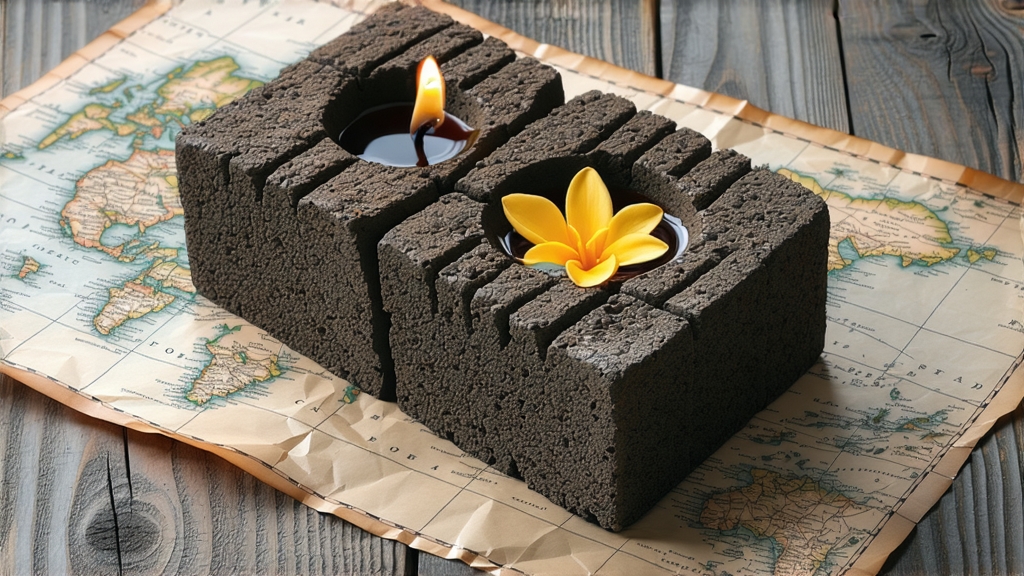
Few beverages carry the dust of the Silk Road in every leaf, yet Fu brick tea—compressed, fermented, and secretly flowered—does exactly that. Born in the misty mountains of Hunan during the Ming dynasty, this sub-category of Chinese dark tea was originally a side-product: tea masters discovered that the humid summer heat inside straw-lined crates encouraged a mysterious golden fuzz on the bricks intended for the horse-trade caravans heading west. Instead of discarding the “spoiled” cargo, Tibetan and Mongolian merchants noticed the brew tasted smoother, digested yak butter more efficiently, and traveled for months without molding. Thus, an accident became a genre, and the imperial court soon registered it as “Fu zhuan cha,” literally “Fu brick,” honoring the county of Fuxiang where the royal warehouses stood.
Today the name is protected; only bricks pressed in the 36 licensed factories of Anhua county may bear the word “Fu.” Yet within that narrow geography lies a surprising spectrum of styles. The smallest unit, the 200 g “mini Fu,” is a pocket-sized bar designed for urban millennials; the classic 2 kg “Ma Fu” still carries the hoof-print stamp once recognized by caravan inspectors; the 1 kg “Jin Fu” is wrapped in hand-woven bamboo and gifted at weddings to symbolize a union that, like the tea, improves with time. Regardless of size, all genuine Fu bricks share one invisible signature: Eurotium cristatum, a harmless fungus that blooms into golden dots called “golden flowers” (jin hua). Under a 40× magnifier the flowers resemble tiny sunflowers; under a mass spectrometer they reveal a factory of enzymes that convert bitter catechins into mellow theaflavins and release the statin-like molecule lovastatin, giving Fu brick its trademark dried-apricot sweetness and reputed cholesterol-lowering power.
Crafting a Fu brick is a dance between moisture, pressure, and patience that stretches across four seasons. In early April the pluck begins: only the 3rd and 4th leaves—tough, leathery, and too mature for green tea—are snapped off the shrub Camellia sinensis var. sinensis, cultivar “Yun Da.” The leaves are withered under mountain breezes for six hours, then pan-fired at 280 °C for ninety seconds to kill green enzymes while preserving leaf integrity. What follows is a sequence unique to dark tea: first “rolling-rest-rolling” to bruise cells, then a 24-hour pile-fermentation inside a steamed room kept at 28 °C and 85 % humidity. During this phase the leaves turn from olive to coffee-brown and develop the earthy aroma Chinese tasters liken to “old cellar.” Next comes the “re-steaming and compression” ritual: the damp leaves are showered with 0.5 % of Anhua well-water, packed into cotton-lined wooden molds, and pressed under 50-ton hydraulic plates for precisely 27 minutes—long enough to weld the leaves into a dense brick but short enough to leave micro-chanels for future fungal respiration. The bricks are then wheeled into the “flowering room,” a dim cave where temperature is held at 26 °C and humidity at 78 % for 15–20 days. Here Eurotium cristatum awakens, its spores drifting like gold dust until each brick sports at least 50,000 visible colonies per gram, the legal minimum for Grade A Fu. Finally the bricks are slow-dried for seven days at 35 °C, wrapped in reed leaves, and stacked in ventilated warehouses for a statutory 12-month aging before sale; connoisseurs, however, cellar them for decades.
To brew Fu brick correctly one must respect its dual nature: it is both sturdy enough to survive a yak-saddle and delicate enough to cradle a micro-ecosystem. Start by rinsing the brick in 95 °C water for three seconds—this “wakes the flowers” without washing them away. Using a 150 ml Yixing teapot or a 250 ml gaiwan, prise off 5 g of leaf along a natural fracture line to preserve the fungal layer. The first three infusions should be flash-steeps of 5, 7, and 10 seconds at 100 °C; expect a clear amber liquor smelling of dried persimmon and wet hay. From the fourth infusion onward extend each steep by five seconds; the tea will darken